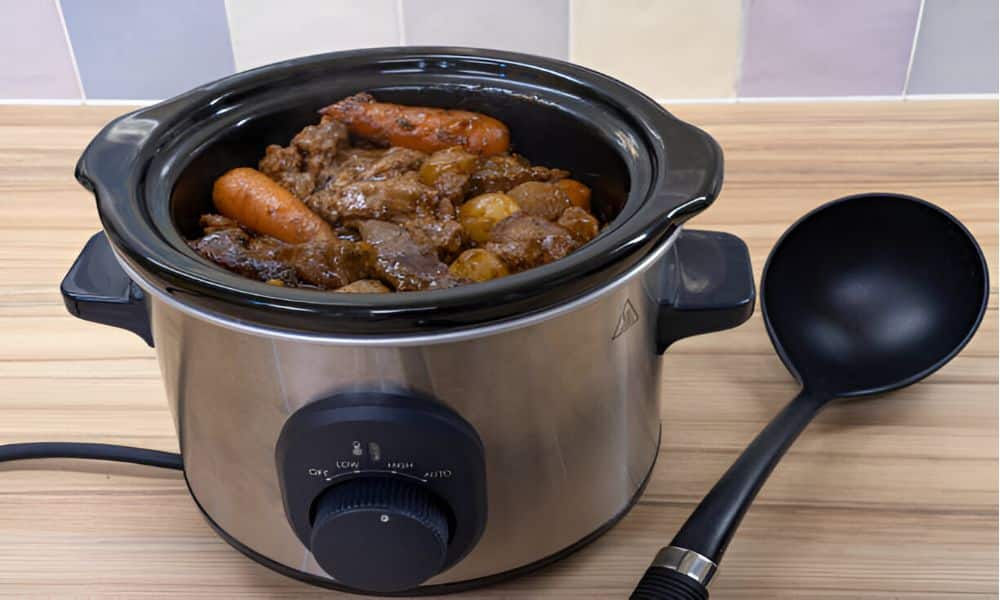I once tried a beef roast stew in a crock pot for a weekend dinner. The smell was rich, warm, and full of promise. But the meat? Tough. Dry. I could barely cut through it. That moment stayed with me. Many home cooks face this. It feels frustrating, especially after hours of waiting. But there’s good news. You can learn how to fix tough meat in slow cooker with a few simple steps. I’ve done it, many times. In this guide, I’ll share my favourite tips to save your meal and make it better than ever. Let’s dive in.
Why Meat Gets Tough in a Slow Cooker
They are supposed to make life easier. You toss in the meat, set the timer, and wait for that fall-apart tenderness. But sometimes, things go wrong. The turns out chewy or dry.
One common reason is the cut. Some cuts don’t do well with slow heat. Lean lacks fat and collagen. It dries out fast. A good beef roast or brisket has marbling. That fat keeps things juicy.
Heat matters too. High heat rushes the job. It tightens the fibres. That makes it tough. Low and slow is the secret to soft bites. It gives time to break down.
How to Fix Tough Meat in Slow Cooker (Step-by-Step)
Tough meat doesn’t mean dinner is ruined. It just means it needs a little more care. Here’s how to bring it back to soft, juicy perfection—no stress, no waste.
01. Add Moisture and Reheat
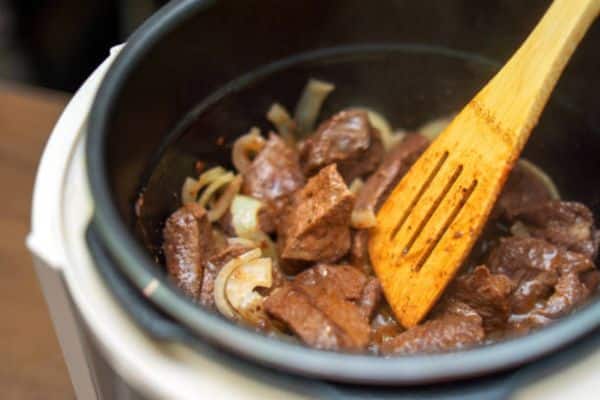
First, return the meat to the slow cooker. Pour in more broth or water—just enough to keep it moist. Cover the lid. Set the heat to low. Let it cook for one to two more hours. This extra time helps the fibres soften.
02. Slice It Thin or Shred It
Pull the meat out. Let it cool for a few minutes. Then slice it thin across the grain. Or use two forks to shred it. Smaller pieces are easier to chew. They also soak up juices better.
03. Simmer It in the Juices
Put the sliced or shredded meat back into the cooker. Let it rest in the warm broth for 30 minutes. This gives it time to reabsorb flavour and moisture.
04. Add a Little Acid
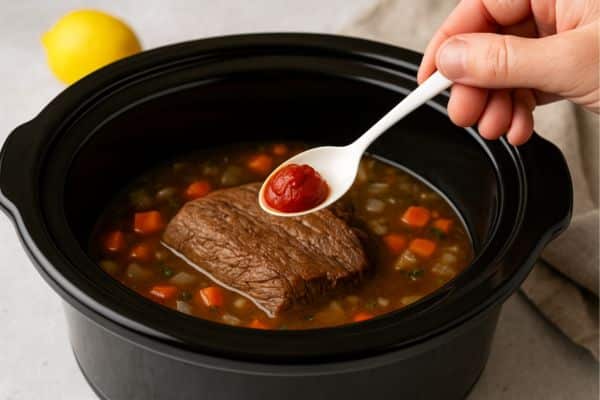
Pour in a splash of vinegar or lemon juice. Tomato paste works too. Acid helps break down tough fibres. Just a spoonful can make a big difference. Add it near the end of cooking for best results.
05. Let It Rest Before Serving
Take the meat out and place it on a plate. Cover it with foil. Let it sit for 10 to 15 minutes. This step helps keep the juices inside. The result? Tender, full of flavour.
Pick the Right Cut: Not All Meat Cooks the Same
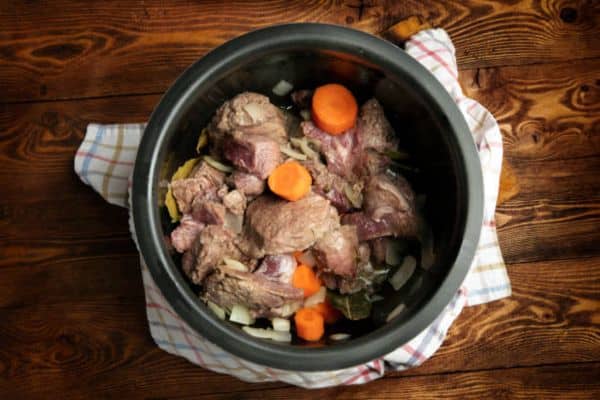
Not every piece of meat works well in a slow cooker. Some turn soft. Others turn dry. It all comes down to the cut.
The best cuts have fat and connective tissue. These break down during long, slow cooking. That’s what makes the tender. Chuck, brisket, and pork shoulder are slow cooker champions. They may feel tough at first, but give them time. They reward you with rich flavor and soft texture.
On the other hand, lean cuts cook fast. But they dry out. Think pork loin, chicken breast, or round steak. These don’t hold up well in a crock pot..
Slow Cooker Settings That Make or Break Your Meal
Heat settings can make all the difference in slow cooking. It’s not just set-and-forget. How you cook affects how the turns out.
Low heat is your best friend. It gives the fibers time to soften. For a big cut like chuck or brisket, low and slow is the golden rule. Let it cook for eight to ten hours. That long stretch makes meat tender and juicy.
High heat might seem faster. But it’s not better. It can make meat dry and tight. Big cuts don’t like to be rushed.
Also, not every cooker is the same. Some run hotter than others. That can surprise you. You may follow the recipe but still end up with tough. Want to be sure? Use a thermometer. A cooked beef roast should hit around 195°F to fall apart with a fork.
Boost Flavour and Texture With These Easy Tricks
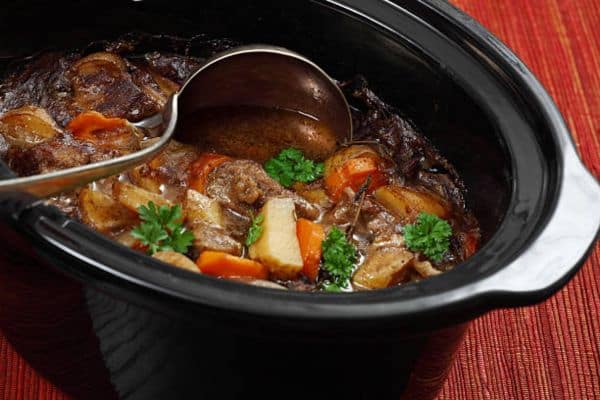
Want your slow cooker meals to taste like they came from a fancy kitchen? Just add a few small steps. They make a big difference.
Start by searing the meat. Heat a pan with a little oil. Brown each side before adding. This locks in flavor and gives it a nice crust. It also adds depth to your stew or roast.
Next, don’t skip the broth. Add garlic, herbs, onions, and chopped veggies. These build layers of flavor.
Then, in the final hours, stir in a splash of vinegar or a spoon of tomato paste. This adds a gentle tang. It also helps break down any leftover toughness. A little acid brings balance and boosts texture.
How to Avoid Tough Meat Next Time
Tough meat can be fixed, but it’s even better to stop it before it starts. Here’s a quick guide to help you get it right from the beginning.
Use the right cut. Chuck, brisket, and pork shoulder work best. These cuts have fat and connective tissue.
Add enough liquid. Meat needs moisture to stay tender. Use broth, sauce, or even water. Just a cup or two will do.
Don’t rush it. High heat may seem faster, but it can ruin the texture. Cook low and slow. Let time do the work.
Let it rest before slicing. This last step matters. Resting helps the juices stay in the meat. It makes every bite taste better.
Best Slow Cookers for One Person (If You’re Cooking Small)
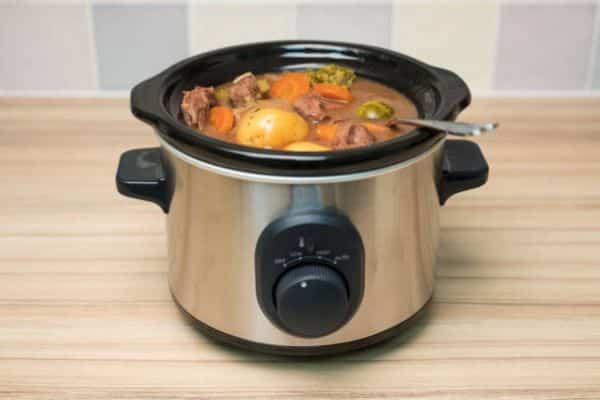
Cooking for one doesn’t mean you need to give up flavour or ease. A small Best Slow Cookers for One person can still make soft, tasty meat, just in the right size.
01. Crock-Pot 2.5-Quart Mini Oval Manual
This one is a classic. It’s simple, small, and easy to use. Great for soups, stews, or a small beef roast stew in a crock pot. Cleanup is fast, and it stores well in tight spaces.
02. Elite Gourmet 1.5-Quart Personal
Perfect for single servings. It’s lightweight and has cool-touch handles. You can toss in a pork chop or chicken thigh and have a full meal in hours.
03. Hamilton Beach 3-Quart
A little bigger, but still great for one or two people. It offers more room without being bulky. Plus, it cooks evenly and has a removable stoneware bowl for easy cleaning.
Final Words
Don’t let one tough meal stop you. We’ve all been there. Even seasoned cooks have opened the lid and found meat that’s dry or chewy. That’s part of the journey.
Cooking isn’t a trick—it’s a skill. And skills grow with practice. Now you know what to do. You’ve learned how to spot the right cuts, set the heat low, and fix things when they go wrong. That’s real progress.
So try again. Pick a cut with good marbling. Add broth, take your time, and let do its thing. Your next dish will be better. And the one after that? Even better still.
FAQs
Can I reheat meat in a slow cooker safely?
It’s better to reheat cooked meat on the stove or in the microwave first. Then place it in the to keep warm. Reheating from cold takes too long and can allow bacteria to grow.
What’s the best way to store leftover meat?
Let it cool. Then place it in a sealed container in the fridge. It’s best eaten within three days. You can also freeze it for up to three months.


